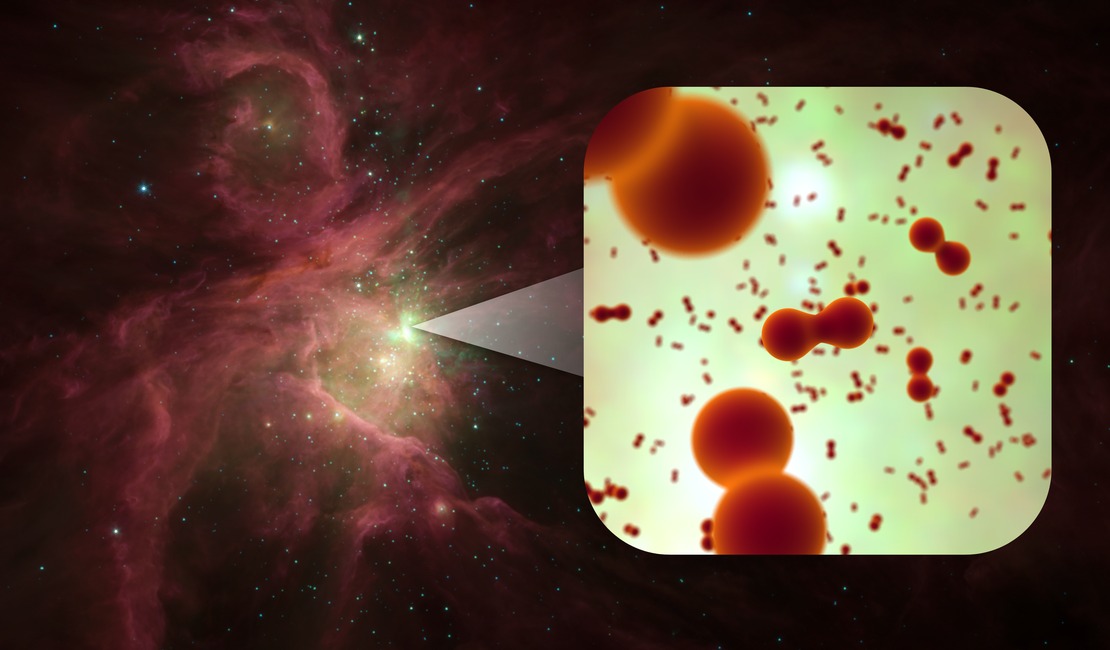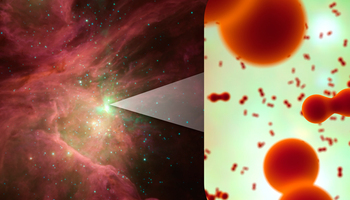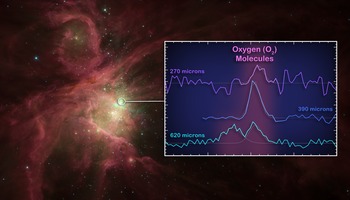
Oxygen No Longer Lost in Space
Astronomers have at last identified the distinct signatures of oxygen molecules in space, using observations made with the Herschel Space Observatory, a European Space Agency mission with important NASA contributions. The rarity of cosmic oxygen molecules -- the same molecules making up part of the air we breathe on Earth -- is still a mystery, but the new observations provide clues about why they had gone missing.
Herschel found the molecules in a dense patch of gas and dust adjacent to star-forming regions in the Orion nebula. Astronomers suspect that newborn stars heated nearby icy grains, releasing water, which was then converted to oxygen. In other parts of clouds, where oxygen molecules are not detected, the oxygen may be locked up in the icy grains.
The inset is an artist's concept of a collection of oxygen molecules, where two connected balls represent two oxygen atoms bound together as an oxygen molecule. The image of the Orion nebula was taken in infrared light by NASA's Spitzer Space Telescope.
Image Details
- Date
- August 1, 2011
- ID
- nhsc2011-014a
- Type
- Collage
- Credit
- ESA/NASA/JPL-Caltech
Object Details
- Name
- Orion
- Messier 42
- M42
- NGC 1976
- Subject | Milky Way
- Nebula Type Star Formation
- Distance
- Lightyears 1,450









